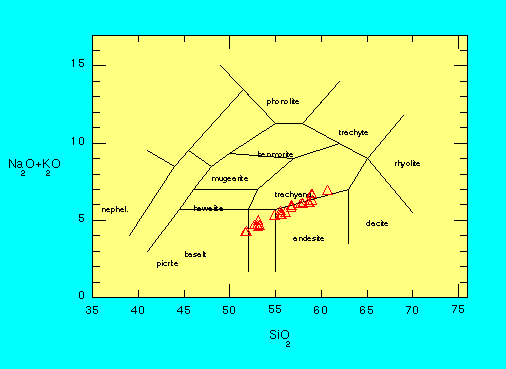Fairbrothers et al. (1978) describes Boquerón lavas as "grey to black, porphyritic, pilotaxitic basalts, basaltic andesites, and andesites that have phenocrysts of plagioclase, augite, olivine and titaniferous magnetite. Orthopyroxene is present in some samples; amphibole is absent. The groundmass consists of plagioclase, augite, magnetite and glass in varying proportions. Many samples are moderately vesicular."
Chemical analysis of lavas from the walls of the Boquerón crater and from historical lava flows on the northwest flank of the volcano were done by Fairbrothers et al.(1978) and were classified as calc-alkaline basalts and andesites to tholeiitic andesites.

Cox-Bell-Pank (1979) diagram showing the rock types for several samples from Boqueron.
Processes which can explain these results are: an increased proportion of plagioclase fractionation with respect to the proportion of augite fractionation. The cyclical changes in silica content can be best explained by a combination of crystal fractionation, which increases silica content, followed by influx of basaltic magma that mixes with residual magma, driving the silica content down.